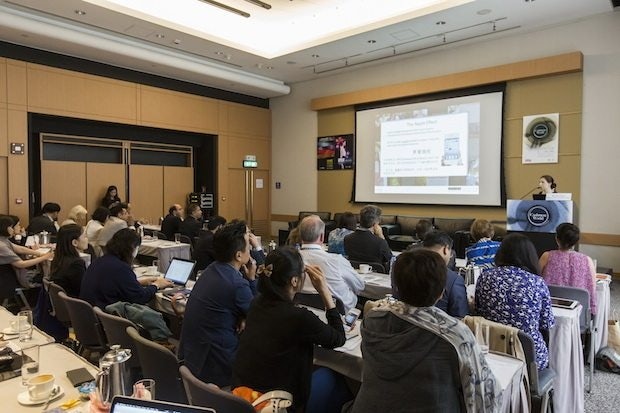
From the harvesting process to retail sales, the global cashmere and fine fiber industry is deeply connected to China. With 95 percent of the world’s supply of pure cashmere coming from China along with the massive importance of China’s luxury consumer market, it’s no surprise that the world’s only trade event dedicated to cashmere was held in Hong Kong this year with a heavy emphasis on China as a discussion point.
Taking place from October 5 to 7 at the Hong Kong Convention & Exhibition Center, the Cashmere World Forum hosted expert speakers from across the global cashmere and fine fiber industry hailing from Afghanistan to Belgium to discuss the latest developments in both marketing and production of these luxurious materials.
The event emphasized how vital Chinese luxury demand is to the future of the fine fiber industry, and featured discussion on the market’s slowdown as well as changing consumer tastes by Fenix Group President and CEO Anthony Keung, Jane Singer, the editorial director of Hong Kong-based publication Inside Fashion, and Jing Daily’s own editor-in-chief Liz Flora. Presenters emphasized the fact that although China’s domestic luxury market is experiencing a sales slowdown, Chinese luxury consumers remain vitally important to the industry as they shift their spending abroad and seek out a growing range of new labels.

One big focus of discussion for the event was how to reach China’s new generation of luxury consumers as digital marketing and e-commerce become vital channels for sales and marketing. In order to analyze these topics in more detail, the event featured presentations by Velvet Group Founder and CEO Patrice Nordey to discuss social media marketing and Mei.com CEO Thibault Villet to go over the latest trends in luxury e-commerce in China.
“Digital is here to communicate but also to sell products,” said Nordey, who discussed the importance for luxury brands of “designing the consumer journey” through various touch points that include a mix of online and offline platforms. O2O strategies are especially important for luxury brands, he said, as “omnichannel is really becoming the new normal.” He outlined three key goals for an O2O strategy: increasing store foot traffic, enhancing point-of-sale experience, and sales conversion. A key way to enhance O2O campaigns for luxury brands is through WeChat, which “is really changing the digital landscape in China,” he said. The multitude of functions being added to WeChat, including payment systems, means the platform is “really starting to be a Swiss army knife.”
In addition to social marketing, e-commerce is also crucial for reaching Chinese consumers. According to Nordey, Chinese consumers’ above-average interest in buying fashion online means that the cashmere industry should be especially focused on e-commerce. “If you look at every market, the first category is consumer electronics,” he said. “In China, the first category is accessories, fashion, clothing—this is the first category. This is what people are buying online.”

Villet agreed, stating, “Consumers are shifting toward e-commerce. Somebody was asking, ‘Do you think you can sell cashmere online?’ Yes, we do it on our website.” He also noted, “The new generation is just born with connected devices and born into buying online. This is why there is a very strong future for luxury e-commerce.” Mobile is incredibly important not just for digital marketing, but also for making sales, according to Villet, who noted that the previous week, Mei.com had made 70 percent of its sales over mobile devices.
In addition to the consumer-facing side of the cashmere and fine fiber industry, the forum also discussed the importance of China to harvesting and production with an emphasis on sustainability. In addition to supplying most of the world’s raw cashmere, China also produces an estimated 70 percent of finished cashmere products.
The fair also highlighted new sustainable fine fibers being produced in China that are gaining more global and domestic attention, such as yak wool harvested on the Tibetan Plateau. Andrea Dominici, the CEO of Italian yak textile brand Myak, discussed the challenges of ensuring sustainable business practices in China's pastoral areas. “The impact of the breeding of animals on grassland is measurable and relatively easy to evaluate and control,” he said, “but controlling the impact on the rest of the production process is a demanding and testing task.”
The presenters also agreed that sustainable production in China would be crucial for the Chinese consumer market in the future, noting that studies have found Chinese luxury consumers are increasingly demanding products by companies with sustainable practices and a dedication to corporate social responsibility.